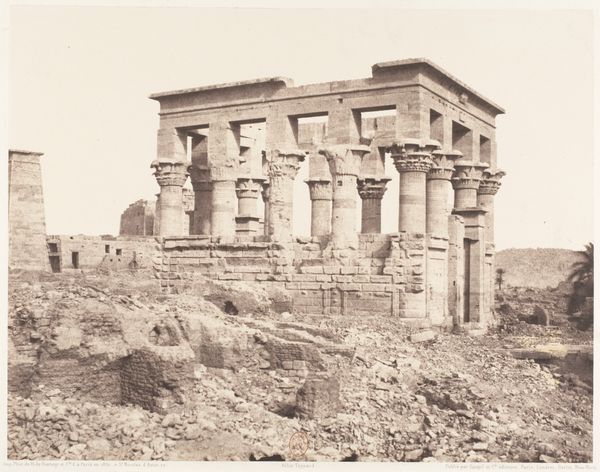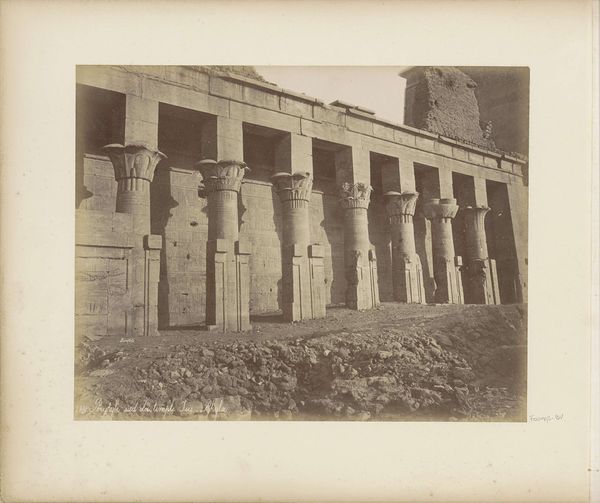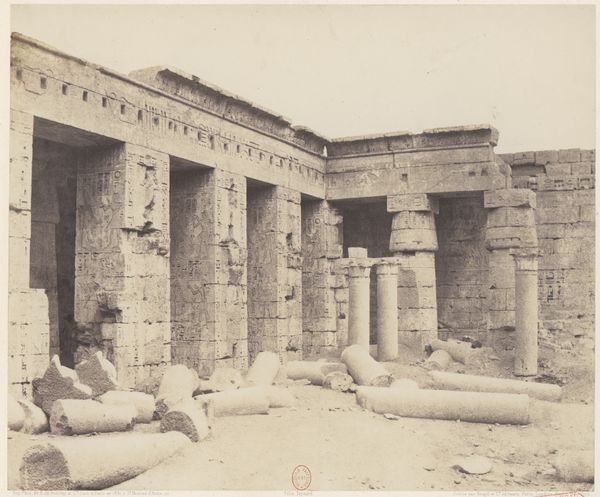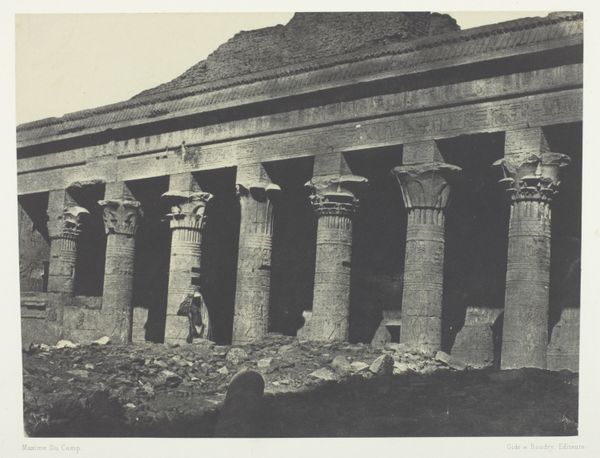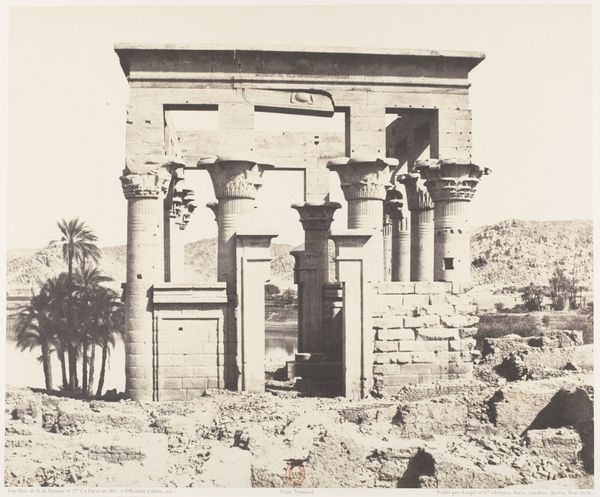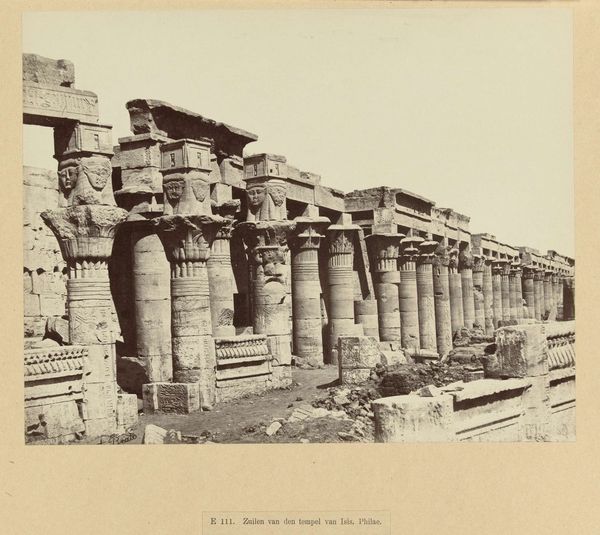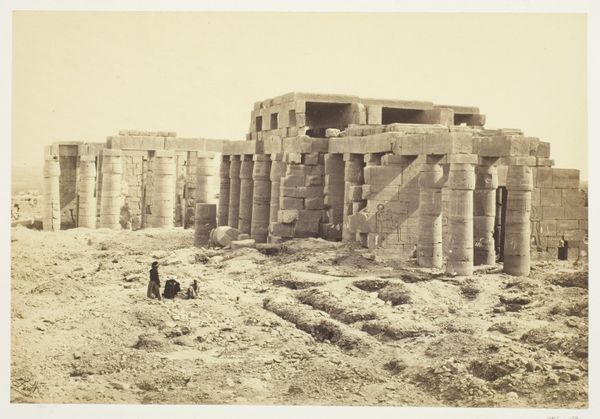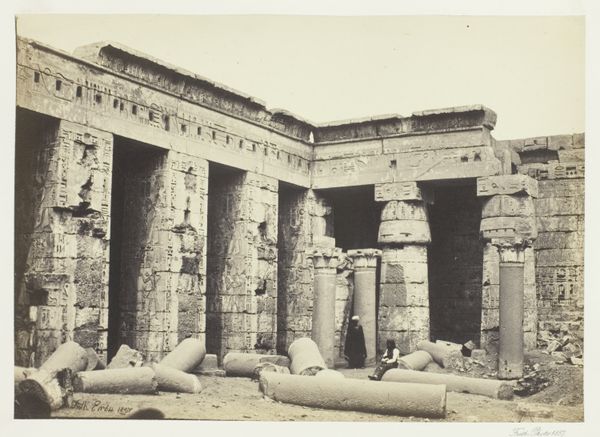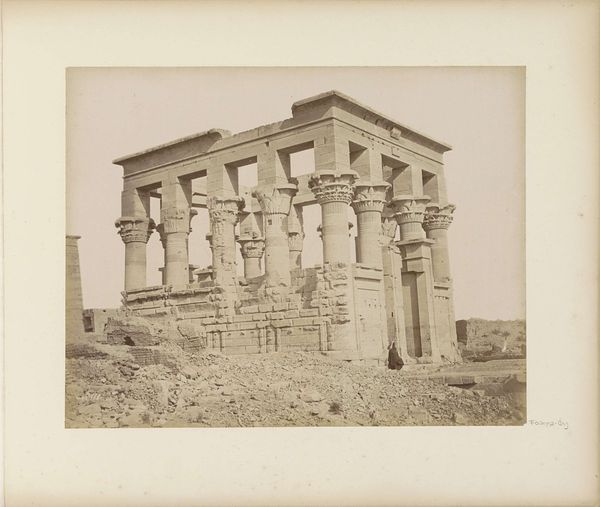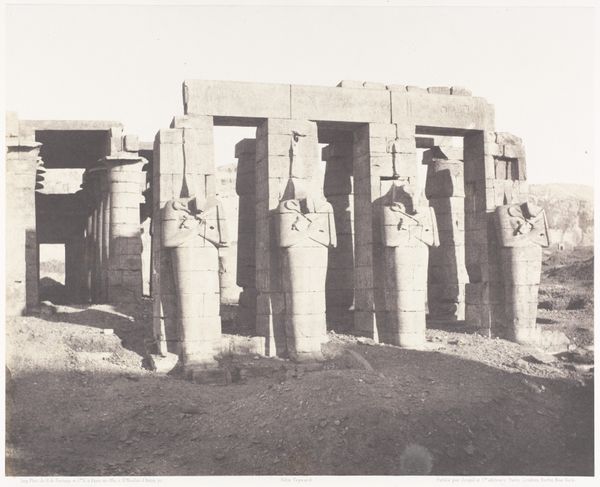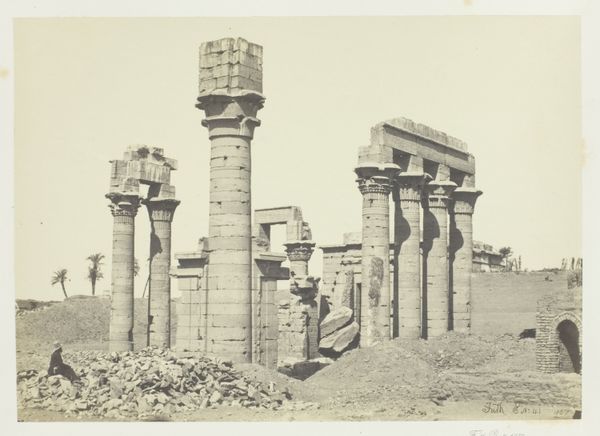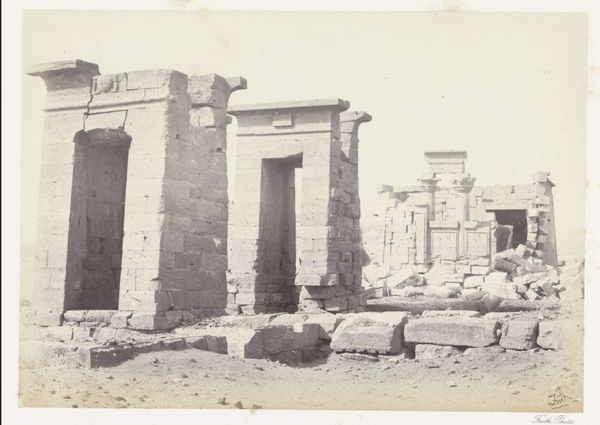
Edfou (Apollonopolis Magna), Galerie Latérale de la Cour et Pronaos 1851 - 1852
0:00
0:00
photography
#
landscape
#
ancient-egyptian-art
#
photography
#
historical photography
#
ancient-mediterranean
#
column
#
19th century
Dimensions: 24.7 x 30.8 cm. (9 3/4 x 12 1/8 in.)
Copyright: Public Domain
Editor: This is Félix Teynard's photograph "Edfou (Apollonopolis Magna), Galerie Latérale de la Cour et Pronaos," taken between 1851 and 1852. It captures a stunning view of the ancient Egyptian temple. The light and shadow create a really strong sense of depth, and the scale of the columns is breathtaking. How did photography influence the public's understanding of ancient sites like this at the time? Curator: That’s a crucial question. Think about it: before photography, most people's understanding of Egypt came from drawings or written accounts, filtered through artistic interpretation or colonial biases. Teynard’s photograph offered what appeared to be an objective view. However, photography itself isn't neutral. The angle he chose, the way he framed the temple, even the quality of light, all shape our understanding of it. Editor: So, you’re saying it's not just about documenting, but also about interpreting? How might Teynard's work reflect the colonial context of Egypt at that time? Curator: Precisely. Egypt was a site of intense European interest, both scientifically and politically. Photography like this played a role in constructing a visual narrative of a powerful, ancient civilization ready to be 'discovered' and perhaps even 'civilized' further, through Western intervention. Consider how the unexcavated sand dominates the foreground - it emphasizes both the ruinous state and the potential for unveiling a glorious past. It was a narrative of both ruin and promise, ready to be acted upon by Europe. Editor: I see. It’s like the photograph is subtly justifying the West’s presence and activities in Egypt. The ruins imply a need for "restoration." I had originally thought it was more straightforwardly a 'historic record'. Curator: Exactly. And the very act of taking these photographs was often tied to archaeological missions and political agendas. Reflecting on the public role of art also unveils that these photographs were powerful tools in shaping perceptions. What have you learned? Editor: I’ve definitely gained a deeper understanding of the layers of meaning within this photograph and a stronger ability to look past the simple beauty of a photo. Curator: Me too!
Comments
No comments
Be the first to comment and join the conversation on the ultimate creative platform.
